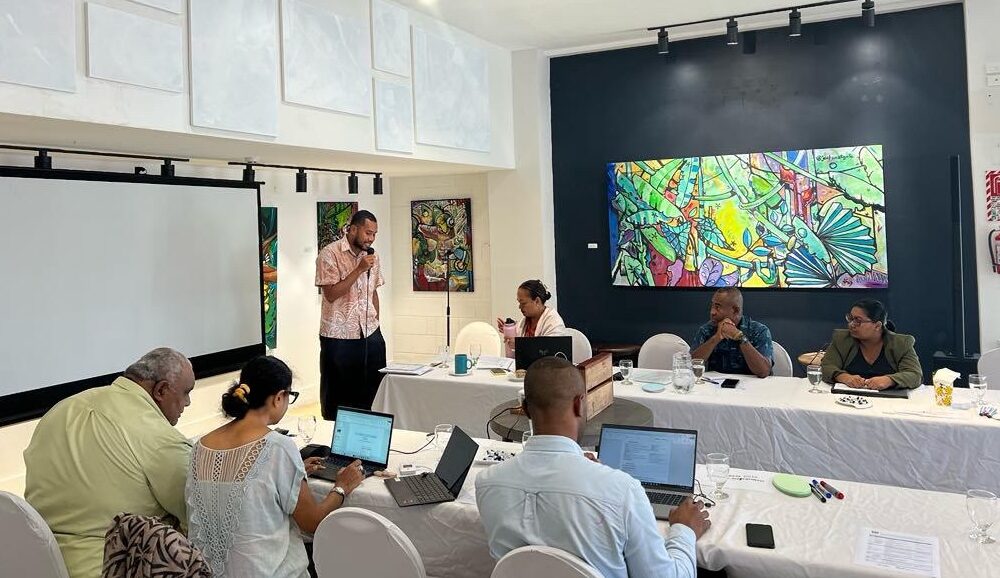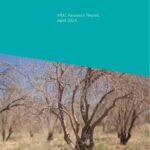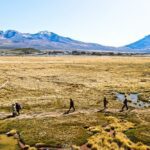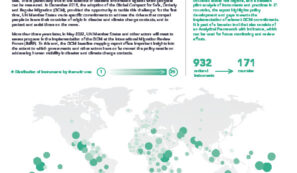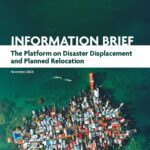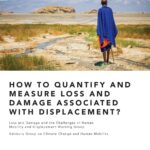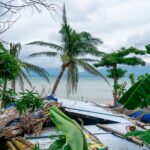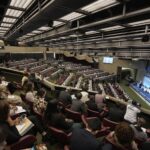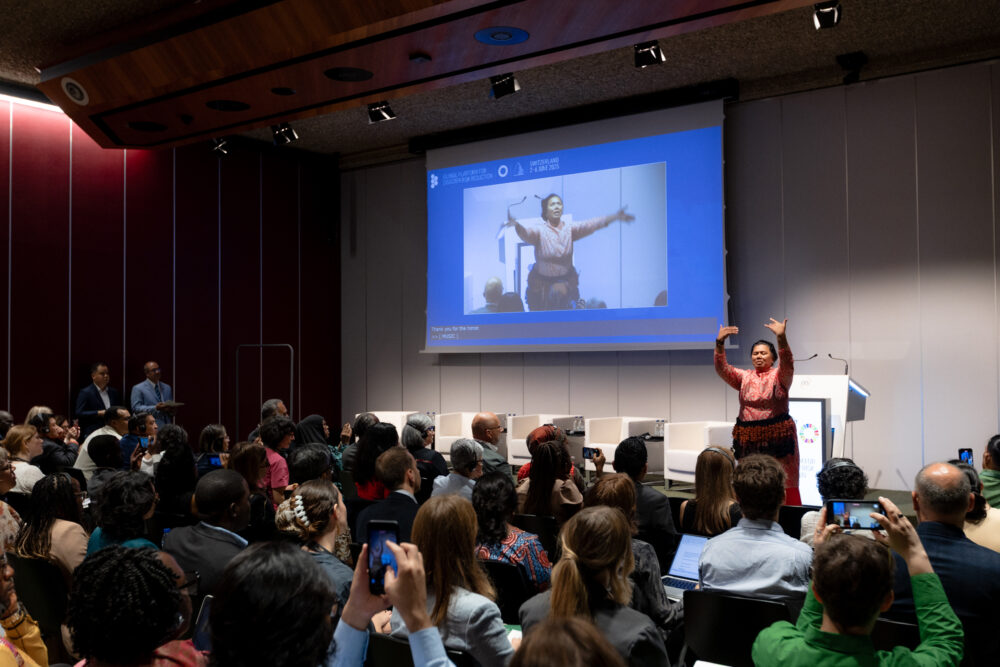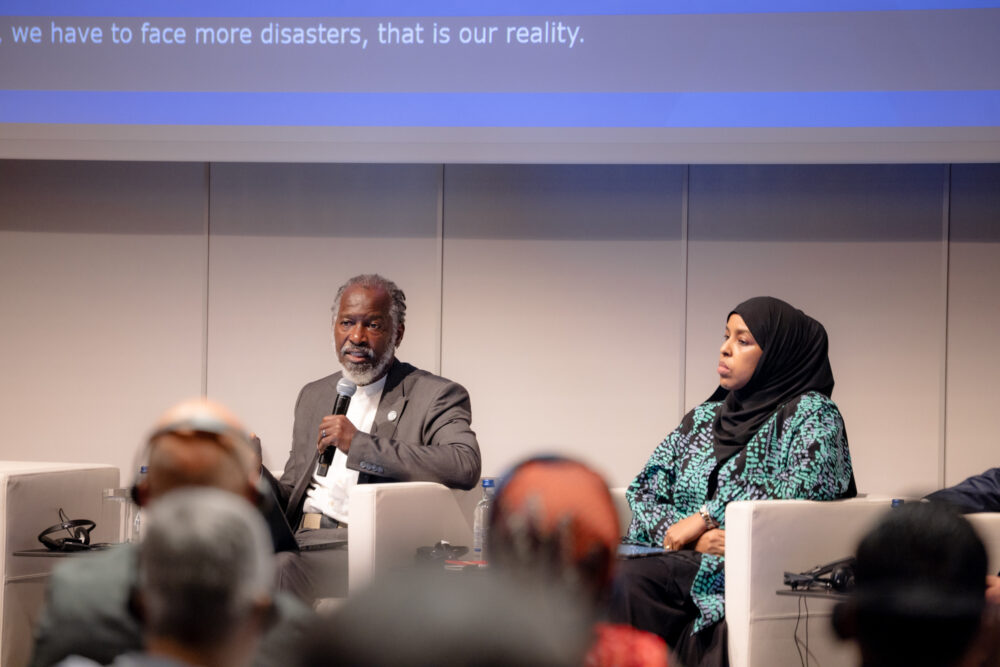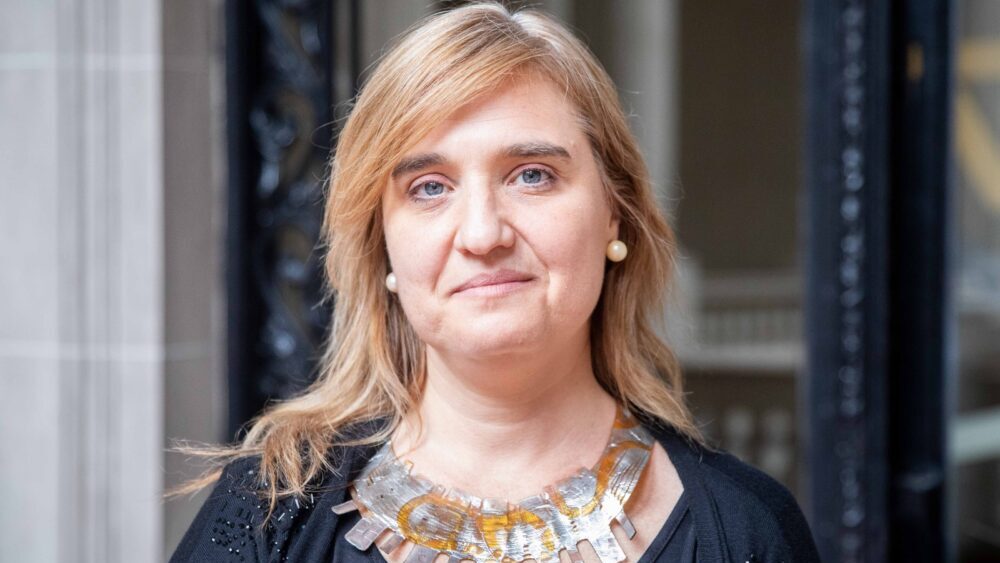Similar to many island states, Fiji faces a host of weather-related hazards and disasters exacerbated by the adverse impacts of climate change. The country is exposed to tropical cyclones, riverine floods, drought and extreme rainfall, and its coastal areas are affected by sea-level rise, coastal flooding and erosion. All these hazards threaten people’s lives, land and assets, and put them at risk of displacement. In the context of current and potential future disaster displacement, Fiji has been developing a comprehensive institutional framework on planned relocation, the process of moving an entire village out of harm’s way, comprising a policy, standard operating procedures and decision-making tools.
Fiji is a member of the Steering Group of the Platform on Disaster Displacement (PDD) and was the Chair of the PDD from 2021-2022The PDD through its Project to Avert, Minimize and Address Displacement related to the effects of climate change (PAMAD), with funding from NORAD, has been supporting Fiji with the development, implementation and financing of these efforts. Mr. Nacanieli Bolo Speigth supports this work asPDD Regional Advisor in the Pacific. He has been working on internal disaster displacement, climate change and human mobility, disaster risk reduction, climate change, risk informed development and environment for over 12 years with the UN, Government, and non-governmental organizations.
In this conversation, he shares details and insights on the work done in Fiji under the PAMAD project.
PDD Secretariat: Can you explain the work you have been doing under PAMAD in the Pacific?
Nacanieli Bolo Speigth: The work under this project and in direct support to the Fijian Government is two-fold: one, increase access to finance to support the loss and damage work in Fiji, and two, finalize the Standard Operating Procedure (SOP) on planned relocation in Fiji, which includes the development of a comprehensive risk and vulnerability assessment methodology (CRVAM). This methodology is applied within any planned relocation process to determine whether a community needs to be relocated or not, the ultimate decision for relocation lying with the communities.
One of our key contributions to the development of the methodology was to ensure that the assessments performed using the CRVAM would consider the risks related to potential disaster displacement. To this end, we involved experts to review the methodology and integrate relevant displacement indicators. We also pioneered a non-economic loss and damage methodology assessing non-economic and cultural values of communities (both tangible and intangible) that might be lost in a relocation process, something that had never been done before.
Within the Government of Fiji, a Taskforce on Relocation and Displacement (TFRD) is established under the Climate Change Act of 2021 to guide decision-making on planned relocation. It includes representatives from key government ministries, the climate change division, and as an international partner the German Agency for International Cooperation (GIZ). The decisions of the taskforce are guided by a multisectoral technical working group (TWG) that comprises technical experts from government agencies, non-government organizations and academia. Through the task force, GIZ approached PDD to work with the TWG to help Fiji incorporate a non-economic loss and damage assessment methodology into the CVRAM. The Fijian Government has been thoroughly investing in this for many decades and historically has kept records of cultural losses and damages since the 1960s.
The process for the development of this methodology began with a desk-based review, followed by the preparation of a proposal that enabled the TWG to co-develop and refine the methodology collaboratively through a series of consultation workshops.
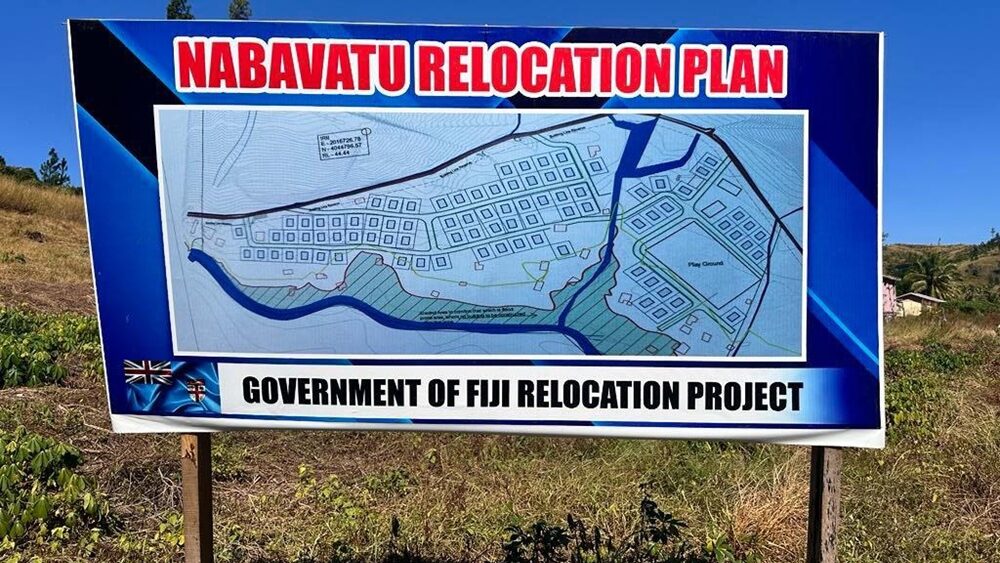
The methodology was then piloted in two sites identified for relocation. The first pilot exercise was with a community in Nabavatu that had been displaced between 2019 and 2020 due to a landslip exacerbated by prolonged rainfall. This dual-trigger event, both geological and weather-related, led to the displacement of about 40 households from Nabavatu village to a temporary camp site. The displaced persons have been awaiting relocation for over four years and are on the priority list of the Fijian government relocation initiative. The piloting of the non-economic loss and damage methodology and the CVRAM supported the decision-making process on planned relocation stipulated in the SOP. The second exercise took place at Vuniniudrovu focusing on the overall operationalization of the entire CVRAM. Vuniniudrovu is less than 45 minutes’ drive away from Suva within the island of Viti Levu. The community needed to be relocated because they are experiencing flooding owing to their proximity to the Waimanu river and they are unable to divert the increasing water flows.
PDD Secretariat: Can you tell us more about the consultations that were conducted, especially the exchanges with the communities and how they engaged in these exercises?
Nacanieli Bolo Speigth: The piloting of the methodology in Nabavatu was a week-long intensive exercise. The process began with a day dedicated to engaging the technical officers in the so called northern division of Fiji. This initial step was crucial for socializing the methodology and raising awareness about the planned relocation process before engaging with the community. Once with the community members, we spent several days conducting consultations and raising awareness about the planned relocation process, the community consensus needed to make decisions, and the methodology for assessing non-economic loss and damage. At the end of the week, we held a debrief to summarize the findings and finalize a report.
We engaged the community at a time of significant frustration, as its members had been waiting for relocation for four years already. This frustration stemmed from unmet expectations, coupled with a dependency that had developed due to these unfulfilled promises. Notably, this was not the first time the community had been displaced. During a previous flood, they had independently rebuilt without waiting for government support. However, this time around, expectations for external assistance were much higher. Many residents had chosen to stay in the displacement camps, believing that remaining there was a requirement to receive government-provided housing and shelter. This belief contributed to making people’s lives in tents more precarious over time.
One aspect that the community particularly appreciated was our effort to understand and take into account their cultural and traditional knowledge. For example, we explored how they used traditional signs like the behavior of birds or animals to predict cyclones and how this knowledge had been used in the past. This led to profound discussions, particularly with women, about their traditional practices and experiences.
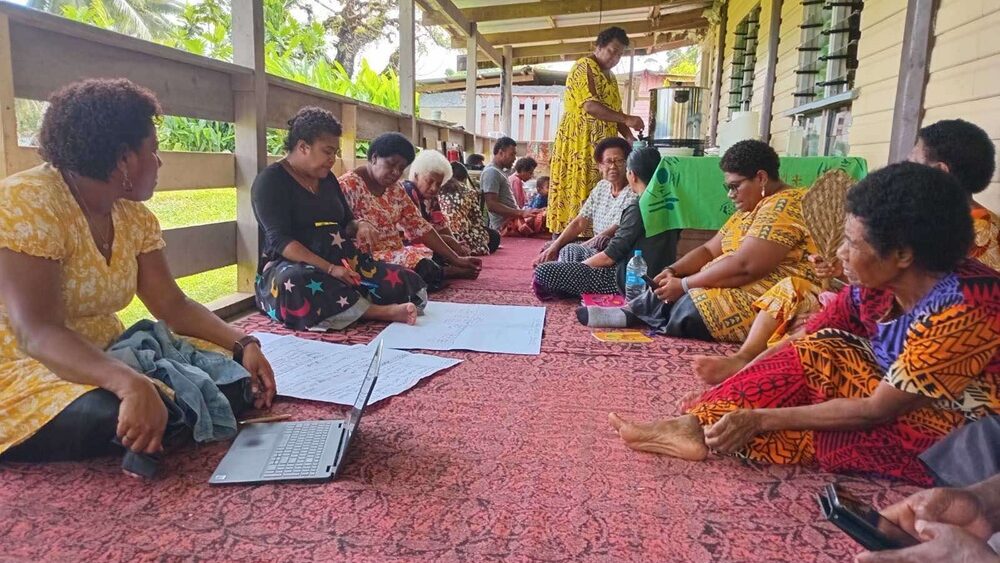
Our engagement process involved group discussions tailored to different demographics: men, women, and young people. This approach brought out critical insights, such as a growing lack of knowledge transfer between generations. For example, traditional farming practices and their cultural significance are not being effectively passed down to younger members of the community as compared to the past.
Another significant finding was the uneven distribution of responsibilities between genders. Women were handling much of the daily household and family needs, including providing food and caring for children, while men were hesitant to farm or seek alternative income sources on unfamiliar land due to the trauma experienced. Privacy and hygiene concerns were also prevalent, with the tent-based living arrangements contributing to skin diseases and other health issues.
A critical outcome of the pilot was achieving consensus within the community. Under the SOP, various levels of consent are required: consent to move, consent to be assessed, agreement on the new village layout, and approval of housing designs, among others. Securing 60% of the community members’ signatures was essential for the government to release the next phase of funding for construction. The consultation workshops emphasized the importance of designing a village layout that preserved traditional elements, like communal spaces such as rara or open ground, churches to ensure that the communities feel comfortable and can integrate in the new location.
PDD Secretariat: Was there anything that surprised you about the interactions and conversations had with the local communities?
Nacanieli Bolo Speigth: When we began, we had a set methodology and a prepared list of questions. However, the way we approached asking these questions and conducting the workshops made a significant difference. One of the main challenges we faced was translating the questions into Fijian language. In some cases, a single English word required multiple Fijian words because of the nuanced meanings. Ensuring the consistency of these translations was critical, as inconsistent translations led to responses that did not align with the intent of the questions we had originally constructed in English.
To address this, we spent time clarifying and revisiting the questions. Sometimes, instead of conducting the process conversationally, we wrote the questions on paper, put them on a wall and let participants walk around and write answers to them. This approach gave them time to think and reflect before they responded, in their own time.
We also observed varying levels of engagement in discussions among different groups. For instance, men who are traditionally the main decision-makers in the planned relocation process showcased a range of perspectives. Some were in favor of the relocation, others were opposed due to dissatisfaction with the prior process, and some were undecided.
We were accompanied by senior government officials skilled in conflict resolution. Their involvement was invaluable, as they facilitated continued conversations and helped mediate disagreements. In fact, we frequently had to visit the high chief of the village to keep him informed of the sensitive discussions and seek his guidance on resolving conflicts. These visits became a necessary part of the process to maintain transparency and ensure the chief’s support.
PDD Secretariat: Can you share more about the role of the government in developing this methodology?
Nacanieli Bolo Speigth: From the government’s perspective, incorporating non-economic loss and damage into planned relocation assessments has been crucial for a more comprehensive understanding of the true cost of these processes. Initially, the cost of planned relocation was viewed primarily through the lens of tangible expenses such as housing construction and land provision which were estimated at about FJD2 to 5 million per relocation.
However, when we conducted the non-economic loss and damage assessment, the cost rose significantly and almost doubled when these factors were accounted for. This revealed how much of the actual costs were previously underestimated. The losses and damages that are not easily quantifiable such as cultural losses, social cohesion, and traditional knowledge are significant and need to be factored into the overall cost of planned relocations.
This information has been critical and used by the Fijian Government in global negotiations, as it provides a more accurate picture of the realities faced by communities. It allows the government to argue for and mobilize adequate resources and support based on the actual needs of the people affected.
Beyond the financial aspect, having a sound methodology to assess non-economic loss and damage has been pivotal. It equips the government with a tool to evaluate the broader impacts of human mobility and planned relocation in the context of disasters and climate change. This approach ensures that the true costs, both tangible and intangible, are acknowledged and addressed. This is exactly what we were contributing with the PAMAD project.
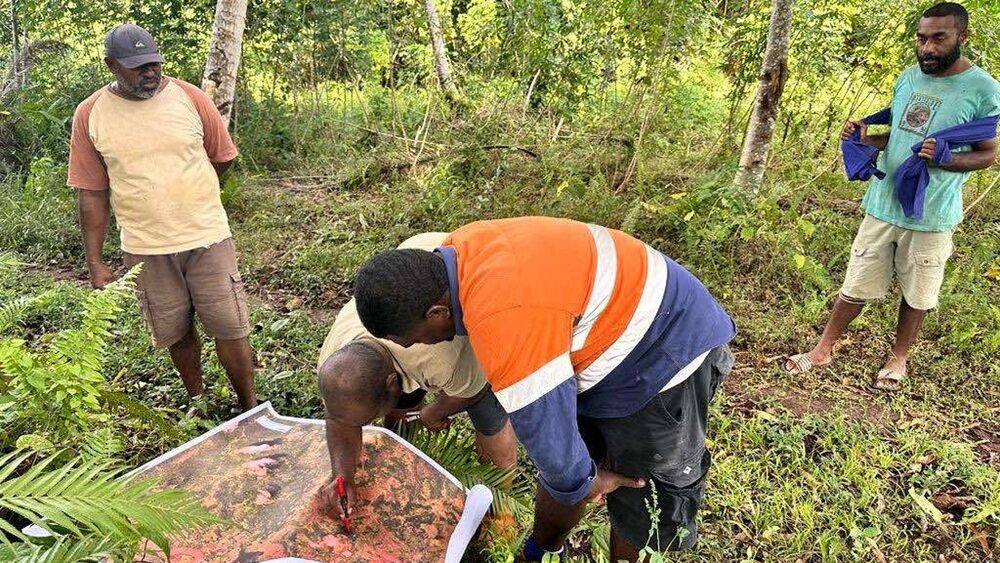
PDD Secretariat: What kind of challenges did you face in your work with the community?
Nacanieli Bolo Speigth: Many discussions centered around food security, traditional farming practices, and negotiations with traditional landowners. In this specific case, there were two distinct landowning units that owned the land identified for the community’s relocation. This required careful documentation within the government system to formalize the process. Once the title was established, it enabled negotiations with the landowning units to secure their agreement and finalize decisions on relocating the village to those pieces of land. These negotiations were complex and time-consuming, as they involved balancing the interests of the community with those of the landowners while ensuring alignment with government processes. Despite these challenges, the process in Nabavatu proved incredibly valuable in informing and shaping the broader work on planned relocation efforts elsewhere.
PDD Secretariat: What are the next steps in the process, and when can we expect the finalization and launch of the methodology?
Nacanieli Bolo Speigth: The next steps involve completing the report from the two pilot projects conducted in 2024 to inform the finalization of the comprehensive risk assessment and vulnerability assessment methodology (CRVAM) before it is publicly launched.
PDD Secretariat: Any final thoughts to share?
Nacanieli Bolo Speigth: I would like to pay tribute to the leadership and significant contribution of the late Ms. Christine Fung who inspired this idea of including non-economic loss and damage in the CVRAM and facilitated PDD’s technical support to the Taskforce and TWG.
Secondly, I would like to mention that one of the unexpected outcomes from this piloting work has been the broader application and influence of our cultural assets mapping that provided the basis for the methodology conversation. The mapping of tangible and non-tangible cultural assets developed by Dr. Erica Bower supported by the work of Mr. Simione Sevudredre, was crucial to the conversation on non-economic loss and damage work for Fiji. I have personally used this table extensively in contributing to the development of a regional methodology on the evaluation of ecosystem services. Similarly, this mapping has also been shared and referenced by academics in conducting research on non-economic loss and damage at the national level. I hope it can also inspire other ongoing and future processes.
Header Photo: PDD

